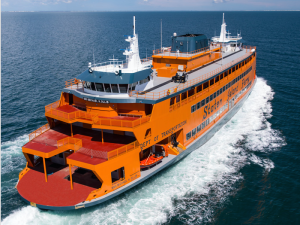
Best Vessels: Distinctive deliveries of 2021
SSG Michael H. Ollis: First of three new Staten Island Ferries Built by Eastern Shipbuilding Group, the 320 foot long by 70 foot beam SSG Michael H. Ollis is the lead ship

SSG Michael H. Ollis: First of three new Staten Island Ferries Built by Eastern Shipbuilding Group, the 320 foot long by 70 foot beam SSG Michael H. Ollis is the lead ship
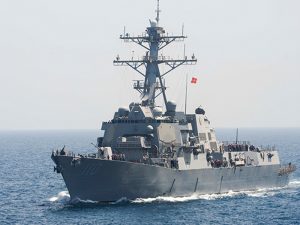
The Senate Armed Services Committee has passed a version of the FY 2022 National Defense Authorization Act that puts back the second Arleigh Burke class destroyer that the Navy had cut from

SEPTEMBER 21, 2017 — Analysts are worried that the container shipping industry is about to build itself a whole new lot of overcapacity. South Korea’s Daewoo Shipbuilding & Marine Engineering Co. said
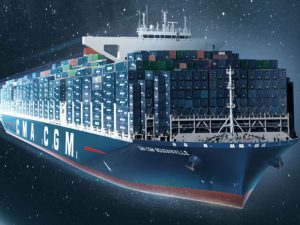
SEPTEMBER 15, 2017 — Marseille, France, headquartered container shipping giant CMA CGM today reported strong second quarter results and said that “in order to keep pace with market growth and the group’s
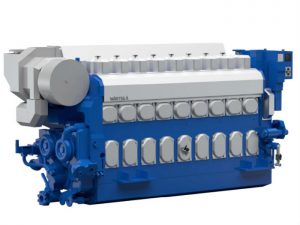
AUGUST 2, 2017— Two new research vessels being built for the China Ocean Mineral Resources R&D Association (COMRA) at CSSC Huangpu Wenchong Shipbuilding and Wuchang Shipbuilding Industry Group yards will feature Wärtsilä
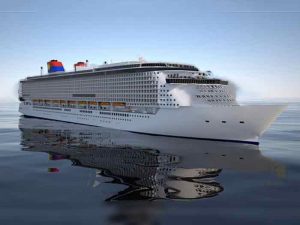
NOVEMBER 17, 2016 — German shipbuilder MV Werften has awarded MAN Diesel and Turbo a contract to power two Global Class cruise ships for Star Cruises. The 340 m long 200,000 grt
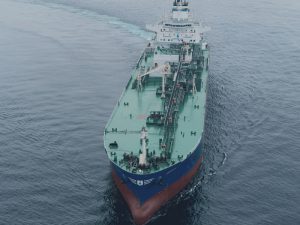
During the pre-SMM 2016 Press Conference on June 2, maritime economist Martin Stopford, Non-Executive President of Clarksons Research Services, said this year shipyards worldwide have experienced the lowest newbuilding orders since the 1980s. Stopford said orders of 14.2 million deadweight tons (dwt) were placed as of the end of April 2016. On an annualized basis that equates to 42 million dwt—the lowest annual rate since 1998 when orders were placed for 37 million dwt of ships. In stark contrast, the average number of ship orders since 2009 has been 94 million dwt.
Shipyards worldwide are expected to deliver about 103 million dwt of ships this year and 88.9 million dwt in 2017.
Stopford provided a perspective on the current weak shipping markets showing the average earnings of tankers, bulkers, containerships, and gas carriers have fallen to levels not see since 2003, according to the Clarksea Index. The average earnings per day in late May fell to $8,900 per day. In 2009, average earnings per day were at $22,000 per day.
There is clearly an overcapacity of ships. He pointed to declining trend in sea trade growth, which is projected at 2 percent this year.
SMART SHIPPING’s THE ANSWER
According to Stopford, one strategy to cope with these difficulties is Smart Shipping. The rapidly evolving information and communications technology (ICT) has enormous potential to improve fleet operations and transport productivity. It will play a crucial part in the survival strategy for shipping, said Stopford.
Stopford outlined the Smart Shipping Toolbox, which includes:
SHIPYARD CAPACITY SHRINKS
Shipyard capacity has been reduced by 20 percent with the closure of 581 “uneconomic” shipyards, but ordering levels for new ships are well below world capacity, says Stopford, so shipyards and marine equipment manufacturers are going to face a challenging year. In 2009, there were 992 active shipyards. Now, there are 423 active yards.
Based on the percentage of ship launches in the year by gross tonnage (GT), Chinese shipyards had 37 percent market share, Korea 35 percent, and Japan, 19 percent.
Korean shipbuilders have been particularly hit by the ordering slump. As we went to press, STX Offshore & Shipbuilding Co., filed for receivership. The shipbuilder could be liquidated or see its debt restructured, depending on what the court decides. STX Offshore & Shipbuilding has been under the control of creditors since 2013. The shipbuilder had losses in excess of 300 billion won last year, and 1.5 trillon won in 2014.
The top three shipbuilders in Korea, Hyundai Heavy Industries, Daewoo Shipbuilding & Marine Engineering, and Samsung Heavy Industries, have all been hurt by the drop in oil prices as oil majors have cut exploration and production expenditures. All three had repositioned themselves towards building higher valued vessels geared towards energy production after the fiscal crisis of 2008 amid competition from much lower cost Chinese shipyard rivals.
There is expected to be consolidation among Korea’s smaller shipyards.
As of mid-March, the Top Five Shipbuilder by Orderbook Value were: HHI, with $24.42 billion, Daewoo, $19.9 billion, China State Shipbuilding, $15.07 billion, Samsung, $10.47 billion, and Japan’s Imabari, with $9.89 billion.
Cruise ship order book swells to $40 billion
Cruise travel continues to grow and expand at a record pace. This year, 24 million passengers are expected to take a cruise vacation this year, up from 23 million in 2015, according to the Cruise Lines International Association (CLIA).
Cruise ship owners are deploying more ships to Australia, China, and Asia to tap into the pent up demand for cruise travel and ordering new ships to accommodate the growth. As of last year, there were 471 cruise ships in service, with 27 new ocean, river and specialty ships scheduled to be deployed this year.
Just last month, Royal Caribbean Cruises Ltd. signed a Memorandum of Understanding (MOU) with French shipbuilder STX France to build a fifth Oasis Class ship for delivery in the spring of 2021 for its Royal Caribbean brand, and two additional Edge-class ships, scheduled for delivery in the fall of each of 2021 and 2022, for its Celebrity Cruises brand.
STX France is completing the design phase of the first prototype 2,900-passenger Edge Class ship and is set to start production this fall for a delivery in fall 2018.
If confirmed, the new construction contracts with STX France would swell the global order book to 59 oceangoing cruise ships, with a total of 176,755 passenger berths. The value of the order book is in excess of $40 billion.
STX France says that, when finalized, the three orders will secure the shipyard’s order book through 2023. Overall, STX would have 12 cruise ships on order, tied with Germany’s Meyer Werft for second most to Italy’s Fincantieri, with 22 cruise ships on order. Meyer Werft’s Finnish yard, Meyer Werft Turku, has six ships on order, with the remainder of the order book divvied up between Germany’s Lloyd Werft, Croatia’s Uljanik and Brodosplit yards, and Japan’s Mitsubishi Heavy Industries.
Not included in those figures is what would be the first cruise ship built in Russia in decades. Last month, Aleksey Rakhmanov, President of Russia’s United Shipbuilding Corporation (USC), says the company was to start construction this year of a cruise ship for an unspecified customer. No further details were available.
The market for river cruise ships is just as strong, with 40 vessels on order. In the U.S., American Cruise Line, Guilford, CT, expects to take delivery of the 170-passenger coastal cruise ship American Constellation in April 2017. The ship is currently under construction at its sister company, Chesapeake Shipbuilding, Salisbury, MD.
Nichols Brothers Boat Builders, Whidbey Island, WA, won a $94.8 million contract to build two 100-passenger, 238 ft coastal cruise ships for Lindblad Expeditions Holdings, Inc. Set for delivery in the second quarter of 2017 and 2018, respectively, the ships will operate between Baja, Costa Rica, and Panama during the winter months and Alaska, Oregon, Washington and Canada in the summer months.
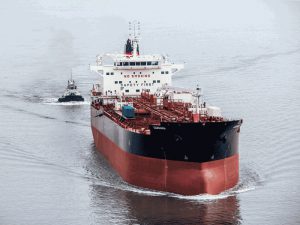
The total capacity of these vessels is just over 7 million deadweight tons (dwt), with a total current value of $4.5 billion (See Table 1: Value of U.S.-Built Shipping). Globally, the United States (as a shipbuilding nation) is ranked in 11th place (in terms of dwt) and a respectable sixth place behind South Korea, Japan, China, the Philippines, Germany, and Turkey in terms of the current value of the U.S. built fleet. Based on the volume of ships on the water, the most prolific U.S. shipbuilder has been NASSCO, San Diego, CA, a unit of General Dynamics. NASSCO also operates shipyards on the U.S. East Coast in Mayport, FL, and Norfolk, VA. As of mid-March, VesselsValue estimated the ships being built at NASSCO had values of around $900 million (this value excludes delivered ships). NASSCO recently launched the 53,700 dwt MR tanker Independence, which VesselsValue currently values at $133.45 million (this excludes a premium for the Jones Act). The Independence will be joined by two MR2 tankers on order at NASSCO for Seabulk Tankers. As of mid-March, NASSCO had four MR2 tankers on its order book for American Petroleum Tankers. 
The San Diego shipyard delivered two LNG-fuelled 3,100-TEU containerships, including the lead of the Marlin class, the Isla Bella, in November 2015 to Tote Maritime. The Isla Bella, along with its sister, Perla dela Caribe, are now operating between Jacksonville, FL, and San Juan, PR.
The only other U.S. shipyard with bulker, tanker, and gas carrier vessels currently on its order book is Philly Shipyard, Philadelphia, PA (formerly known as Aker Philadelphia Shipyard Inc.) Philly Shipyard has built product tankers, crude carriers, and containerships. The Philly Shipyard built fleet is currently valued at just over $1 billion. Its order book consists of eight 50,000 dwt MR tankers and this design has been classed by ABS as LNG Ready, which provides the owner with the flexibility to choose to convert the ship to dual fuel operation in the future.
In early May, Crowley Maritime Corporation christened the Louisiana, third of four LNG Ready product tankers at the Julia Street Cruise Terminal in New Orleans, LA.
Like its sisters, the 600 ft Louisiana is based on a proven design from Korea’s Hyundai Mipo Dockyards (HMD) design. It can carry crude oil or refined petroleum products, as well as other chemical products.
Construction management services were provided by Crowley’s marine solutions group, which provides oversight and management in shipyards across the country for Crowley and other third-party companies. Philly Shipyard also built the tankers Texas and Ohio for Crowley, and the fourth ship in the program is under construction with delivery planned for third quarter 2016.
“The christening underscores our continued commitment to building and operating innovative vessels that deliver the best possible service and efficiency for our customers who depend on us for safe and reliable transportation of petroleum products,” says Rob Grune, Senior Vice President and General Manager, Petroleum Services. “And, as is the case with its sister ships, we designed and built the Louisiana to have the capability to be converted to LNG propulsion in the future, increasing the likelihood of a long service life as new emissions regulations are developed in the years ahead.”
JONES ACT FLEET CONSIDERABLY OLDER THAN WORLD FLEET
It’s no secret that the U.S. Jones Act fleet is considerably older than the average age of the global, non-U.S.-built fleet. The current U.S.-built fleet has an average age of 33 years old versus 13 years old for the global fleet. The most recent ships produced by U.S. shipyards have been tankers and the average age of U.S.-built tankers is only five years older than the global fleet. However, there has been virtually no U.S. investment in bulkers (many of them are part of the Great Lakes fleet). The U.S.-built bulker fleet has an average age of 46 years old versus nine years old for the global fleet. Even a relatively modern ship type, such as containerships, the average age of the U.S.-built fleet is 32 years old, considerably older than the average of 11 years old for non-U.S.-built vessels.
TOP TEN U.S. SHIPOWNERS
According to VesselsValue, the Top Ten U.S. shipowners ranked by value control around half the capacity (48%) of the U.S. fleet (see Table 2. U.S. Shipowners Ranked by Fleet Value).
The Top Ten Shipowners are tanker companies or the tanker arms of oil majors. The current most valuable U.S.-operated fleet is that American Shipping Co., a Norwegian public company controlling a fleet of 10 MR2 tankers built by Philly Shipyard and leased out to OSG, which charters them out to Jones Act qualifying companies. VesselsValue estimates this fleet is worth $830 million. The second most valuable U.S. fleet belongs to new entrant American Petroleum Tankers, which is a subsidiary of Kinder Morgan Terminals, with its fleet operated by Crowley Maritime Corporation, Jacksonville, FL. This fleet will be supplemented by MR tankers currently on the order book of NASSCO. However, in the last 12 months, the U.S. order book has been very quiet, with no bulker, tankers or gas carriers ordered.
SALE AND PURCHASE ACTIVITY
If there is one area where U.S. shipping has been active, it’s been in the sale and purchase market. The dire dry bulk market is one of the driving forces behind Scorpio Bulker selling 25 vessels in the last 12 months (March 2015 to March 2016) for a combined value (at the time of sale) of $878 million (where the sale price is undisclosed, the VV Value the day of the sale is used). Altogether 88 vessels have been sold by U.S. owners for a combined value (where the sale price is undisclosed, the VV Value the day of the sale is used) of $3.4 billion (see Table 3: Sales by U.S. Owners).
Of course, under the Jones Act, U.S. companies cannot purchase foreign-built vessels to operate in Jones Act trade routes. This reduces the pool of potential purchases, which in the last 12 months (March 2015-March 2016) have been limited to eight vessels, including four MR tankers from Philly Shipyard purchased by Kinder Morgan for a reported $568 million (See Table 4: Purchases by U.S. Owners).
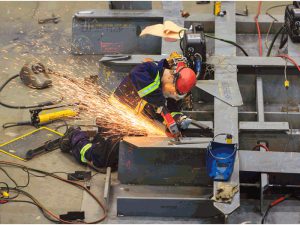
Oil and gas E&P generates billions of dollars worth of business annually for shipyards in the form of newbuilds, conversions, and ongoing repairs and maintenance. With the downturn in oil, however, much of that business has dried up and forced shipyards that depend on the oil patch to rethink their strategy. Many are repositioning themselves to pursue other markets or are undertaking capital investments in their facilities to be more efficient and competitive.
There’s no better example than VARD Holdings, one of the world’s largest shipbuilding groups, whose portfolio is heavily focused on offshore oil and gas. Amid losses of NOK1.29 billion (about $148 million) VARD said last month it would preserve its core expertise and skilled employee base and use its existing shipyard capacity until an eventual recovery in its core market. Among the areas it was pursuing were the offshore wind and aquaculture markets. It will also work more closely with its major shareholder, Fincantieri, to support the cruise vessel and offshore patrol vessel sectors.
NORTH AMERICAN SHIPYARDS INVEST, DIVERSIFY
While operators in the Gulf of Mexico have cold stacked many of their vessels, Galliano, LA-based Edison Chouest Offshore, one of the world’s largest offshore support vessels operators, announced last month that it would invest $68 million in opening a new shipyard in the Port of Gulfport, MS. The shipyard, called TopShip, LLC, will operate at the former Huntington Ingalls Composite Facility, which was acquired by the Port of Gulf Port last March.
The new yard was made possible through an incentive package from the Mississippi Development Authority that would help bring TopShip to the port and create over 1,000 jobs, according to Jonathan Daniels, Executive Director and CEO of the Mississippi State Port Authority—the job creation would prove a significant boost to the local economy.
Lawmakers approved an $11 million package through the Mississippi Major Economic Impact Authority—with $10 million going to discretionary funds and $1 million allocated for workforce training. Additionally, the Port has said it would provide $25 million in Katrina-CDBG funds for infrastructure improvements.
ECO already operates shipyards in the U.S. and one in Brazil: North American Shipbuilding, Larose, LA, LaShip, Houma, LA, Tampa Ship, Tampa FL, Navship in Brazil, and Gulf Ship which is also in Gulfport. Most of ECO’s fleet has been constructed at one of its yards.
Having been born in Mississippi, Gary Chouest, ECO President and CEO expressed his gratitude towards the state for the opportunity to provide quality service to its customers, and help the community thrive.
“We are indeed excited about the opportunities to grow TopShip in a business friendly state, one where we can reach out into the community to recruit various skill sets, developing a quality workforce that will allow TopShip not only to compete locally, but also globally,” said Chouest. “With the help of the state of Mississippi, we will modify our TopShip facility to become one of the safest and most efficient shipyards in the nation, building Chouest pride for our employees.”
Mississippi’s VT Halter Marine, too, has seen how investing in its facilities can help business. Over the last 10 years, VT Halter has invested over $100 million to upgrade its three facilities in Mississippi. This includes expanding beyond the newbuild business with a $13 million investment in a new drydock and repair facility back in 2015, the addition of a blast and paint facility; and the purchase of a 76,000 ft2 climate-controlled warehouse.
The investments have not only allowed growth into the repair business, but also made VT Halter Marine more efficient in its newbuild projects, enabling it to meet the growing demands of the increasingly popular Articulated Tug and Barge (ATB) market. Most recently, VT Halter completed the second of two 250,000 bbl ATB units for Bouchard Transportation (see this month’s CEO Spotlight); and currently is preparing the delivery of the second of two 130 ft, 6,000 hp ABS class ocean towing ATB tugs for Bouchard.
VT Halter Marine is also currently building two 2,400 TEU LNG-powered combination ConRo ships for Crowley Maritime Corporation’s liner services group. El Coquí and Taíno will operate in the Jones Act trade between Florida and Puerto Rico and will offer a 38% reduction in CO2 emissions per container. The ships will be delivered by VT Halter Marine in 2017.
Another yard that has benefited from the use of Liquefied Natural Gas (LNG) as a marine fuel is Conrad Industries. The last few years has seen Conrad Industries, Inc., Morgan City, LA shifting its business approach and diversifying its portfolio—among the shipbuilder’s offerings, it builds tugs, ferries, ocean tank barges, liftboats and specialty barges. In 2015 the yard’s orderbook received a much-needed boost with new construction contracts, including the history-making construction of the first LNG bunker barge for the North American market.
Currently under construction at Conrad’s Orange Shipyard, Orange, TX, the 2,200 m3 capacity bunker barge is being built for WesPac Midstream LLC. Designed by Bristol Harbor Group, Inc., Bristol, RI, and built to ABS class, the barge when delivered later this year will serve TOTE’s Marlin class containerships—Isla Bella and Perla del Caribe, both built at General Dynamics NASSCO. Those LNG-fueled ships are already operating in the Jacksonville to Puerto Rico trade.
It was also certified by GTT to construct the special LNG containment system on the LNG transport bunker barge.
 The shipbuilder has also broadened its offerings further with the expansion of its Deepwater South facility in Amelia, LA. The 52-acre site has enabled Conrad to build large articulated barge units. Currently there are eight tank barges under construction at Deepwater South—ranging from 55,000 bbl to 83,000 bbl capacity.
The shipbuilder has also broadened its offerings further with the expansion of its Deepwater South facility in Amelia, LA. The 52-acre site has enabled Conrad to build large articulated barge units. Currently there are eight tank barges under construction at Deepwater South—ranging from 55,000 bbl to 83,000 bbl capacity.
Conrad says that Deepwater South will undergo a wide range of improvements this year including the addition of a new fabrication and assembly building—which will allow for the uninterrupted construction of hull modules year round; and a new Panel Line Building—expected to begin operations this April. The Panel Line Building will be equipped with an automated welding system, a stiffener fitting gantry to automate the fit-up of stiffeners on the panels, and an 8-headed automated stiffener welder—allowing for the shipyard to process 350 tons of steel per week.
THREE NEW FAB BAYS
C&C Marine and Repair, Belle Chasse, LA, is focusing on increasing efficiencies to maintain its competitive advantage. The yard recently added three new fabrication bays giving C & C an additional 115,000 ft2 for the construction of boats and barges; and a fabrication area of 230,000 ft2.
Over the next few months, the yard plans to order two additional transporters (it currently has two capable of moving 600 tons) with a capacity of 830 tons, bringing the total capacity of its transporters to 1,430 tons. This, says New Construction Manager Matthew J. Dobson, will create new opportunities for the yard, and enable C & C to begin taking orders for the fabrication of new 30,000-barrel barges and allow it to transport larger vessels to land for repair projects and paint jobs.
The yard currently has 29 new construction vessels under contract including three 6,600 hp towboats, one 280 ft PSV, one 270 ft cutter head barge, sixteen tank barges and eight deck barges of various sizes.
EXPANDING INTO LARGER VESSELS
Back in 2014, Metal Shark Boats, Jeanerette, LA, was already a successful builder of aluminum vessels, but it had its sights on the construction of vessels up to 90 ft in length and larger, as well as expansion of its portfolio to include steel. It also signed a technology agreement with Damen that would allow it to build offshore patrol boats up to 165 ft in length.
With the development of the new shipyard in Franklin, LA, Metal Shark, now employs 230 workers between its boat yards, and is among the busiest boatbuilders in the U.S., currently producing a number of 38 ft, 45 ft and 55 ft Defiant class vessels and constructing large orders for the U.S. Coast Guard, U.S. Navy and multiple agencies across the U.S. It also delivered a sophisticated 75 ft multiple purpose port security fire boat to the Port of South Louisiana.
EYE ON THE CARIBBEAN MARKET
For St. Johns Ship Building, diversification of its portfolio and the markets it reaches will propel its next evolution. The small shipyard, which has been under private ownership since 2006, recently delivered the first Elizabeth Anne class of towing vessels to the Vane Brothers Company. The tug is the first in a series of eight the Palatka, FL-based yard is building for the operator. At press time the second vessel was in the water and the third was about to be launched.
St. Johns Ship Building’s yard sits along the St. Johns River—giving it the unique advantage of being on the East Coast with access to both the Gulf of Mexico and the Caribbean—and its because of its location St. Johns has been able to produce such a diverse portfolio. From OSVs to tugs (a new market for the builder), to coast guard vessels and cargo ships, St. Johns’ 100 acre facility and its 150 employees are at the ready to take on any project.
St. Johns Ship Building President Steven Ganoe says that because the yard doesn’t solely rely on the oil and gas market it has been able to keep business steady during the downturn in the oil and gas market.
Ganoe says the shipyard is keeping tabs on the Caribbean market to see how it develops in the wake of the easing of restrictions on Cuba travel—and determine how St. Johns can help meet any growing demand in that specific market. In the meantime, the shipbuilder continues to make improvements to its facility—having recently added an 18,000 ft2 assembly shop and a Messer CNC 80 ft table to help make production more efficient.
REBORN AS WORLD MARINE
Earlier this year it was announced that World Marine LLC—owned by the Teachers’ Retirement System of Alabama and the Employees’ Retirement System of Alabama—had bought all of Signal International’s assets including its full service and heavy fabrication facilities in Mobile, AL and Pascagoula, MS.
According to the Chapter 11 plan of liquidation, World Marine is seeking to become a leader in the ship repair and ship construction market.
World Marine assures that its experienced team—led by Dick Marler—can handle all types of vessels, but the company will place a high focus on new construction, and the repair and conversion of ocean going vessels and offshore drilling rigs—serving the energy, government and commercial marine markets.
World Marine’s construction and repair facilities include three drydocks—a 22,000-ton Panamax class, a 4,200-ton, and a 20,000 MT heavy lift. The company says its future plans include pursuing the emerging LNG market for the construction of bunker barges and transfer vessels.
NEW DRYDOCK AT COLONNA’S
A decade after the American Civil War ended, Colonna’s Shipyard was founded by Charles J. Colonna. Now, 140 years later, the yard continues to operate and develop with the times.
The shipyard currently occupies over 100 acres of land in the Berkley section of Norfolk, VA, and has water access to over 3,000 ft of vessel berthing space and a lift capacity to accommodate vessels up to 850 long.
Colonna’s is also home to the largest Travel lift in the U.S.—with a capacity of 1,000 metric tons.
As part of its future improvement plans, Colonna’s expects to purchase an additional 25 acres across the street from its main entrance, and add a new floating dry dock.
A few months ago, the Governor of Virginia, Terry McAuliffe, announced that the yard would undergo a significant expansion, with Colonna’s investing over $30 million to expand its operations in the City of Norfolk. The expansion would include a new larger drydock, dredging and improvement work to the channel and bulkhead work, and the creation of 51 jobs to the area.
The new floating drydock, which will be named the Charles J., will have a lifting capacity of 11,500 metric tons, an overall length of 595 ft and an inside width of 108 ft. The Charles J. is expected to be fully operational in early 2017 and will accommodate a variety of vessel types including ferries, tugs, barges, containerships, OSVs and several type of government vessels.
Colonna’s CEO Tom Godfrey, said the capital investments would “allow Colonna’s to continue to provide quality services to both commercial and government customers throughout the region.”
 NEW DRYDOCKS, AT BAE, DETYENS, BAY SHIPBUILDING
NEW DRYDOCKS, AT BAE, DETYENS, BAY SHIPBUILDING
Meanwhile, South Carolina-based Detyens Shipyards recently took delivery of its new floating drydock. Built by Corn Island Shipyard, Grandview, IN, the 400 ft x 108 ft drydock will enable the yard to provide a more cost-effective service to smaller tonnage vessels.
According to Detyens, in the past, smaller vessels would have to piggy back in the yard’s larger graving dock—now with the addition of the smaller dock, it can provide drydock services to vessels up to 11,000 DWT. The new dock sits along the yard’s F Pier, which recently underwent upgrades that included the addition of shipyard services, additional lighting, and dredging of 30 ft.
On the U.S. West Coast, BAE Systems is investing $100 million to build and install a second, larger drydock at its San Diego shipyard. Currently under construction in China, the 950 ft drydock will have a lifting capacity of 55,000 long tons and is expected to support the expansion of the Navy ships homeported in San Diego, which are expected to increase by 20 from 60 to 80 by 2020, according to BAE’s Director of Communications, Karl Johnson. BAE Systems is among the leading providers of maintenance and modernization services of the U.S. Navy.
Portland, OR, Vigor Industrial has been aggressively growing its business through the acquisition and merger with several other regional shipyards, including Kvichak Marine Industries, Seattle, WA.
In 2014, Vigor’s Portland yard began operating its new $50 million drydock, the Vigorous. It has been consistently booked since, supporting hundreds of jobs and attracting work that could not have previously be performed in the region, according to Vigor’s Athena Maris.
 Vigorous, with a lifting capacity of 80,000 long tons, is 960 ft long with an inside width of 186 ft and has taken on several repair work projects including the repair work on cruise vessels, and most recently, this past summer, on repair the hull of the multipurpose icebreaker on charter for Shell, the MSV Fennica.
Vigorous, with a lifting capacity of 80,000 long tons, is 960 ft long with an inside width of 186 ft and has taken on several repair work projects including the repair work on cruise vessels, and most recently, this past summer, on repair the hull of the multipurpose icebreaker on charter for Shell, the MSV Fennica.
The addition of Vigorous at the Portland yard, enabled Vigor to also reinvest in some of its existing assets. Specifically, Vigor was able to upgrade and transfer one of Portland’s drydocks to its Seattle facility. In Seattle, the drydock Vigilant will be used to perform repair work on the recently awarded Structural Enhancement Drydock Availability (SEDA) Projects. There, the U.S. Coast Guard cutters Bertholf and Waesche will both undergo significant structural enhancement work, system upgrades and maintenance.
Beyond that Vigor is placing capital investments efforts on its environmental stewardship—this includes working on a comprehensive storm water management system at its Portland facility and a shallow-water estuary to help increase the survival of young salmon and steelhead trout on their way to the ocean at its Seattle facility.
 On the Great Lakes, Fincantieri Bay Shipbuilding (FBS) parent, Fincantieri Marine Group (FMG), has invested more than $33 million in capital improvements to increase manufacturing capabilities at its facility in Sturgeon Bay, WI. FMG is currently in negotiations to acquire additional property adjacent to the shipyard to further expand its serial production capabilities.
On the Great Lakes, Fincantieri Bay Shipbuilding (FBS) parent, Fincantieri Marine Group (FMG), has invested more than $33 million in capital improvements to increase manufacturing capabilities at its facility in Sturgeon Bay, WI. FMG is currently in negotiations to acquire additional property adjacent to the shipyard to further expand its serial production capabilities.
FBS has completed its new Pipe/Outfitting Building & New Welding Center and added a new floating dry dock that has a total lift capacity of 7,000 long tons. The versatile dry dock can be sectioned off, with a 216 ft section and a 432 ft section.
It has completed the expansion of its Fabrication Building and has added a new Beveling Plasma Burning Machine, 200-ton Yard Transporter, IMG Micro Panel Line, and 1000-ton CNC Press.
Back in 2012, FBS added a 45 ft x 47 ft “megadoor” to the south end of its Fabrication Building 311 to allow larger vessels to be built indoors and moved outside for launching and a Manitowoc 300-ton capacity Model 2250 Crawler Crane.
FBS employs 600 to 800 full-time shipyard professionals and expands its workforce to 1,100 to 1,200 using temporary and contract workers during the Winter Fleet repair season.
FBS currently has under construction six tugs and seven barges of ATB design. Accompanying photo shows the ATB tug Barbara Carol Ann Moran and the ocean tank barge Louisiana at the shipyard. As we reported back on February 22, the shipyard has 14 vessels undergoing a wide range of repairs and repowerings for the Great Lakes Winter Fleet.
SAN DIEGO BOATBUILDER GETS BIGGER, GREENER
Vigor, however, isn’t the only shipbuilder looking to help the environment. San Diego based Marine Group Boat Works will soon break ground on a $1.5 million green initiative that will see the yard install a solar panel system compliant with the state of California’s Solar Initiatives.
The addition of solar power comes during one of the company’s most exciting periods, says Marine Group Boat Works’ (MGBW) Leah Yam. MGBW, which has two yards in San Diego and one in San Jose del Cabo, Mexico, recently completed a $2.5 million renovation to its deepwater floating docks system, and will install the final set of docks this spring—making it fully ready for in-water repairs on vessels up to 420 ft in length.
Among MGBW’s most recent repair and retrofit projects is the $19 million refurbishment of the Golden Gate ferry M.S. San Francisco and the conversion of two high-speed aluminum Sub Chapter K San Francisco ferries for the Water Emergency Transportations Authority.
Beyond its repair business, MGBW is also making a dent in the new construction market. Since launching its new construction division in 2008, the shipyard has increased its employee numbers by about 195%, employing 185 workers. Currently, MGBW has five 60 ft aluminum dive boats under construction for the U.S. Navy—the contract calls for the construction of 16; and most recently delivered the first in a series of steel workboats to Japan—two additional boats are on their way, and twelve are on the production schedule, says Yam.
CANADIAN YARDS INVEST FOR NSPS
The end of 2014 saw the completion of Seaspan’s Shipyard Modernization project. Funded entirely by the shipyard, the $155 million project helped transform Seaspan’s Vancouver Shipyards into one of the most modern yards in Canada.
 The two-year project included the addition of four new fabrication buildings—housing a sub assembly shop; panel shop with panel line; block assembly shop; pre-outfitting shop; paint and blast shop; and Canada’s largest (300 tonne) permanent gantry crane.
The two-year project included the addition of four new fabrication buildings—housing a sub assembly shop; panel shop with panel line; block assembly shop; pre-outfitting shop; paint and blast shop; and Canada’s largest (300 tonne) permanent gantry crane.
The expansion was integral to meeting the newbuild project requirements for the Canadian Coast Guard and the Royal Canadian Navy.
Vancouver Shipyards is currently building the first Offshore Fisheries Science Vessel (OFSV) under the National Shipbuilding Procurement Strategy (NSPS) for the Canadian Coast Guard. The 208 ft x 52.5 ft OFSV will help support scientific and ecosystem research critical to the economic viability and health of the region’s marine environment. At press time, 30 of the 37 blocks of the OFSV were under construction.
Seaspan also invested an additional $15 million at its Victoria Shipyards, upgrading its facilities with the addition of a new operation center that, according to Seaspan, would help support testing, trails and commissioning new federal vessels.
At press time, there were nine vessels undergoing refits and drydock work at one of Seaspan’s yards—including the 94 ft Canadian Coast Guard vessel Siyay with is undergoing a nine-month midlife modernization refit.
Keeping the future in mind, Seaspan is also investing in its workforce. Seaspan employs 1,500 employees across its three shipyards—Vancouver Shipyards, Vancouver Drydock, and Victoria Shipyards.
In 2015, the shipbuilder received a Canada Jobs Grant to develop e-learning tools for its expanding workforce—the goal of the funding was/is to help ensure workers have a common understanding of the shipbuilding processes, practices, and protocols.
Seaspan also recently announced that it plans to invest $2 million over the next seven years to help support teaching and research in the University of British Columbia’s naval architecture and marine engineering programs.
At Irving Shipbuilding, Halifax, NS, Canada, the company’s $330 million capital investment plan is already paying dividends. Last September, it marked the start of production of the HMCS Harry DeWolf, the first Arctic Offshore Patrol ship (AOPS) for Canada.
The ship is the first of up to 21 vessels that will renew Canada’s combatant fleet over the next 30 years under the NSPS. Irving Shipbuilding has built more than 80% of Canada’s current combatant ships.
Current direct employment at Marine Fabricators in Dartmouth and the Halifax Shipyard is about 900. Over the next two years, the workforce at both sites is expected to rise to 1,600, with over 1000 directly employed on AOPS production. In addition, total employment at Irving Shipbuilding (all operations) is forecasted to rise to over 2,500 direct employees at peak production of the larger Canadian Surface Combatant vessels that will replace Canada’s current fleet of Halifax Class frigates.
To date, the modernization at Irving Shipbuilding and the AOPS contract have resulted in over $1 billion in spending commitments.
Meanwhile, one of the oldest shipyards in North America, Chantier Davie Canada Inc., Levis, Quebec, has taken its first steps in the Resolve-Class Auxiliary Oiler Replenishment ship project. The project involves the conversion of a containership into an Auxiliary Oiler Replenishment Ship that will be delivered to the Canadian Royal Navy in 2017.
It also recently completed the refit of four of Canada’s heaviest icebreakers, as well as a bulk carrier and is a pioneer in the construction of LNG-fueled ferries.
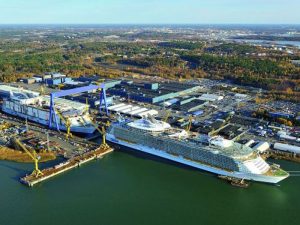
JUNE 15, 2015 — Carnival Corporation & plc has signed a multi-billion dollar contract with Meyer Werft for four next-generation cruise ships that will not only have the largest guest capacity in